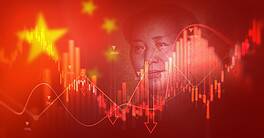Market Analysis
Trade agreements, falling commodity prices, economic growth and Basel III are among the issues that are top of mind for many experts in banking and trade finance in Asia.
The steady erosion of trade barriers across Asia is boosting demand for trade finance, says Rachel Wei, head of global trade and receivables finance with HSBC Hong Kong and Macau. Indeed, the average tariff is negligible among most members of the Association of Southeast Asian Nations (Asean), the organization reports. This “fosters greater trading cooperation across countries,” Wei says.
The recently signed free-trade agreement between China and Australia should boost business, says Hariramchakraborthy Janakiraman, head of global core trade product with ANZ. Once it’s fully in effect, 95% of goods exported to China will move tariff-free. “There is significant potential for growth as Chinese demand for high-quality dairy and meat products continues to grow,” Janakiraman says.
Lower commodity prices should create opportunities in many (although not all) Asian countries, Janakiraman reports. “As most Asian economies are large net oil and commodity importers, a sustained period of low prices can potentially improve trade and current-account balances.”
A lower Aussie dollar—it’s down 9% against the US dollar year-on-year—will boost competitiveness, as well, Janakiraman says. “Stronger growth in major developed economies should also assist.”
Similarly, economic growth all across Southeast Asia is helping to drive trade finance. By 2030, two-thirds of the world’s middle-class individuals will call Asia-Pacific home, Ernst & Young predicts. In 2009 the figure was 28%. “While economic growth leads to higher demand for trade finance, availability of the latter helps facilitate the former,” Wei says.
For instance, the World Bank is forecasting real economic growth in Cambodia, (a member of Asean) at 7% for 2015, notes Janakiraman. That’s stronger than many surrounding countries and provides sound conditions for trade finance.
Although the outlook for the Asian economies and trade finance is positive overall, room for improvement exists. When it comes to the adoption of new technology, trade finance has often lagged other areas of banking, Janakiraman says. However, larger customers are steadily pushing toward electronic documentation and automation, he adds.
In addition, many trade banks now offer end-to-end supply chain solutions, facilitating trade between buyers and suppliers, says Wei.
The implementation of some provisions of Basel III may make trade finance more costly, and the need to implement the regulations uniformly across countries adds cost and complexity, Janakiraman says. “Significant challenges exist in automating checks for trade-based AML [anti-money laundering].”
Many large trade finance banks have begun “de-risking” their customer portfolios by exiting riskier customer segments and correspondent banks. “This has the potential to exclude certain types of customers and smaller banks from access to the global trade finance market,” Janakiraman says.



